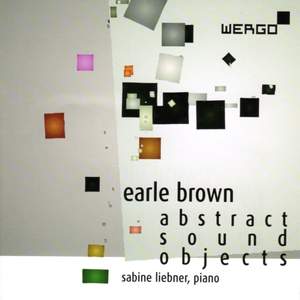Earle Brown’s involvement with the fine arts led him to reject previously fixed ideas of musical form and supposedly sacrosanct rules of composition in the early 1950s. His graphic notations, which are primarily oriented toward Jackson Pollock’s painting procedures, guarantee the opening of time and space which leads to the liberation of the sound and the expansion of the meaning of form.
“[…] mobility of the sound elements within the work and the graphic provocation of an intense collaboration throughout the composer-notation-performance process – were for me the most fascinating new possibility for ‘sound objects’ as they had been for sculpture and painting.” (Earle Brown)
“Home Burial” for piano, based on a poem by the American poet Robert Frost was written in 1949. The manuscript of the piece was only recently rediscovered and the performance here is therefore the work’s first recording.
Among the pieces gathered under the title “Folio”, “December 1952” is surely the most famous. On a piece of paper without staves, the actions of the pianist are indicated through lines of varying length which indicate points in a sound-time-space continuum. “Twenty-Five Pages” consists of 25 single pages, each of which is an independent entity. The decision on the number of the instruments involved as well as on the order of the individual pages is left to the performers. “Four Systems” for any number of chosen instruments was written in connection with the birthday of the pianist David Tudor on 20 January 1954, who premiered the piece shortly thereafter. “Summer Suite ’95”, written after Brown’s almost 30-year abstinence from the piano, is dedicated to the pianist David Arden. Brown sketched out his ideas about the structure of the work graphically, as had been his previous practice. However, after writing the piece down, he realised it on a keyboard and with the help of a computer.



